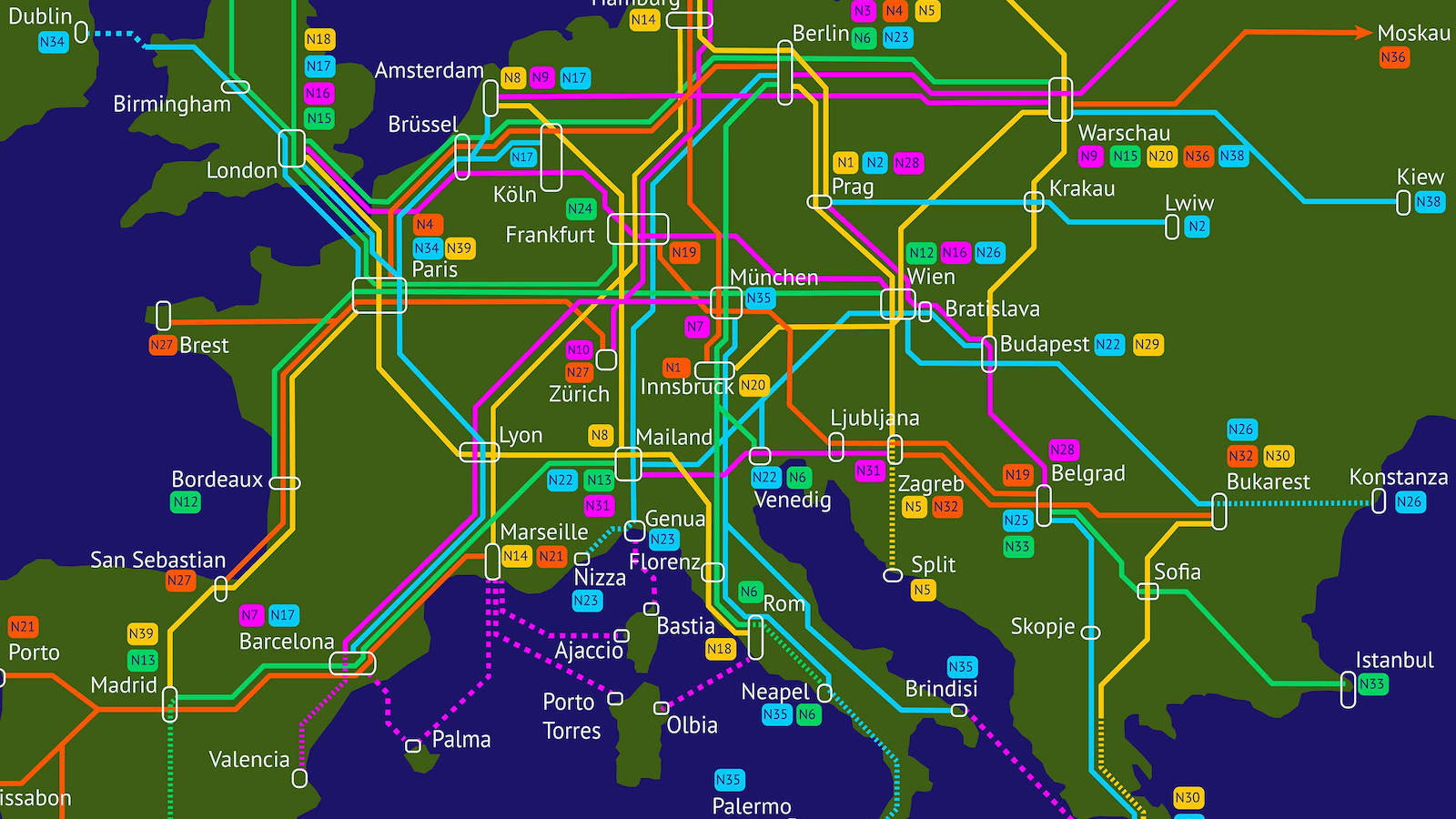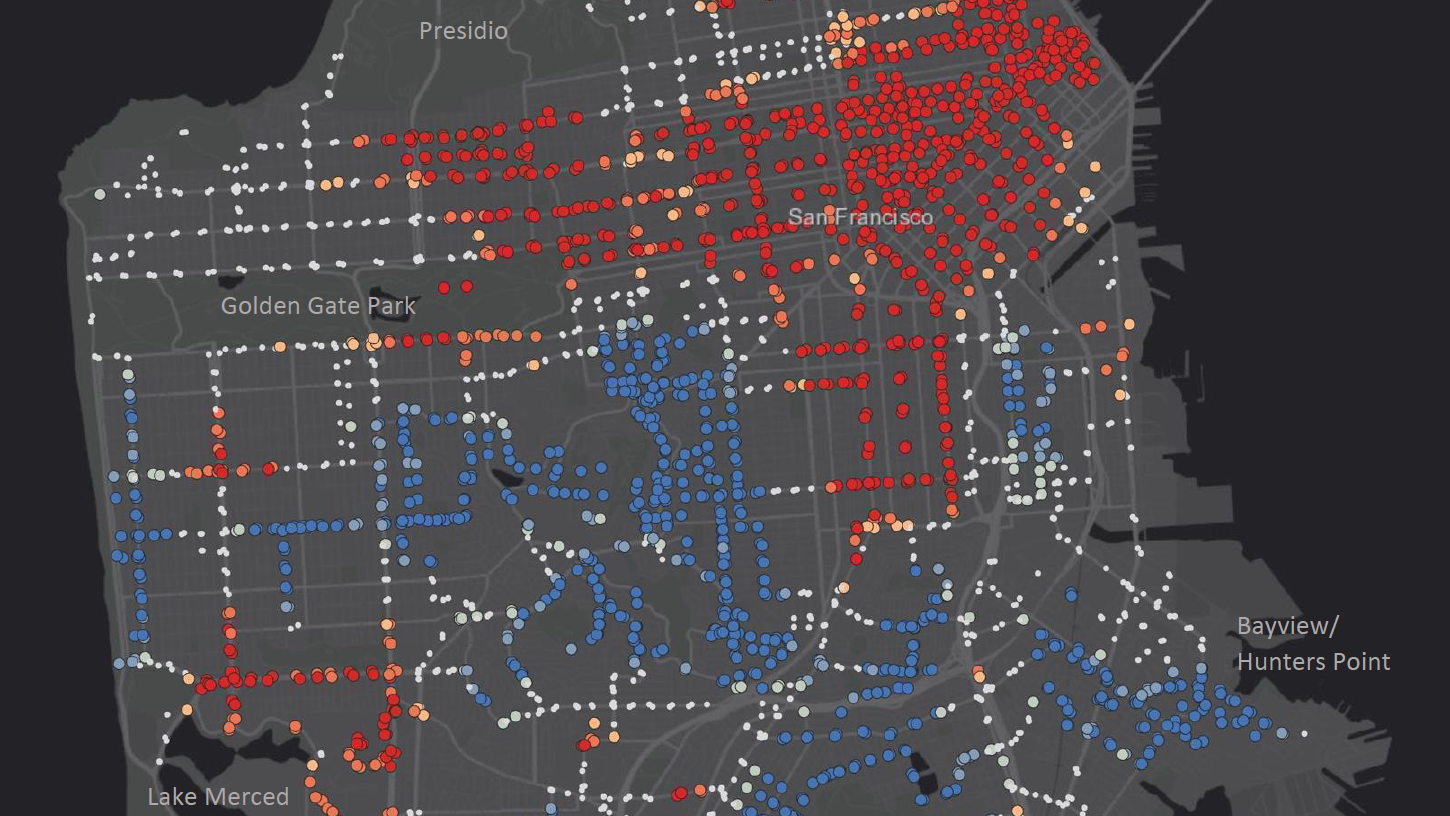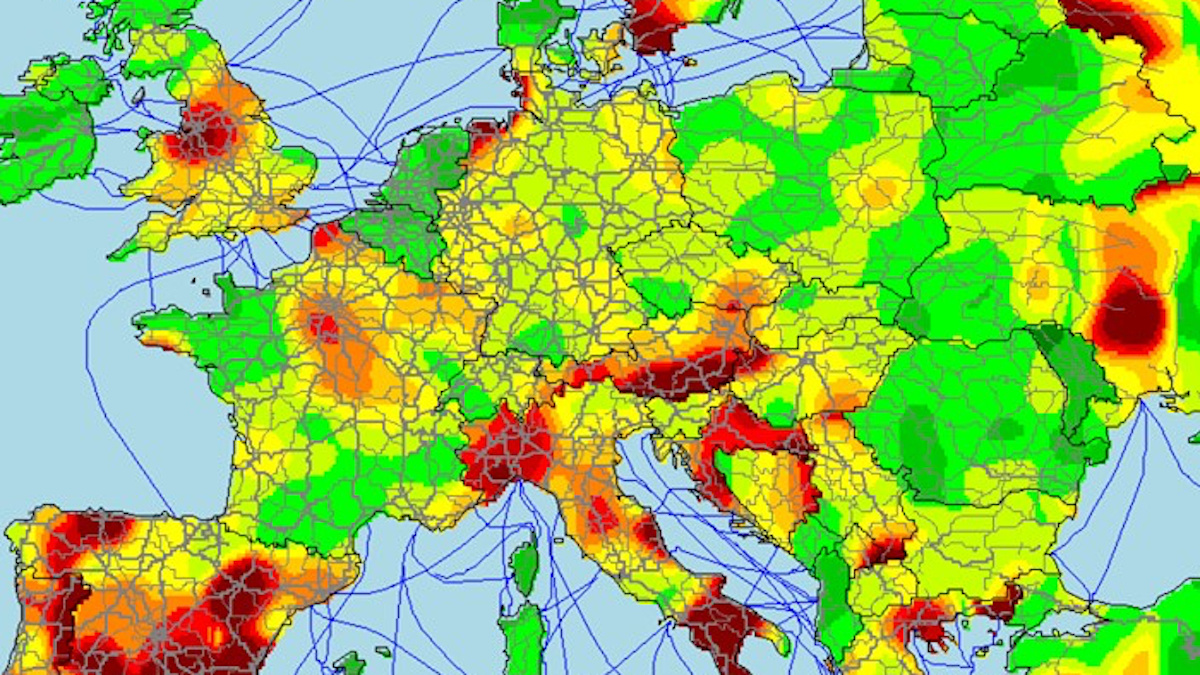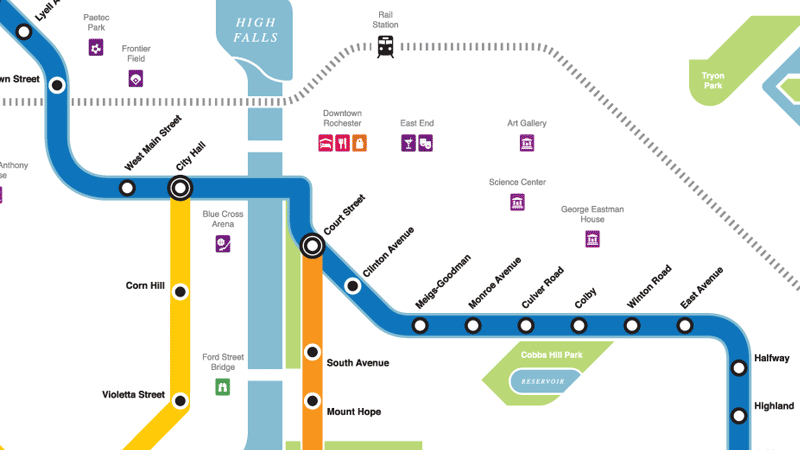These maps provide graphic evidence of how parking lots “eat” U.S. cities
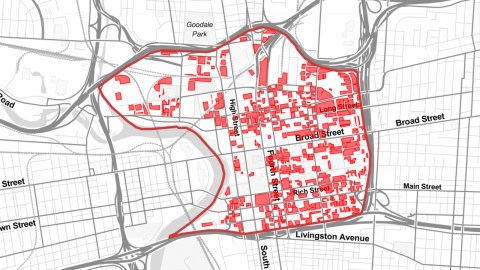
- American downtowns have many problems, but one of the least discussed is parking.
- On average, parking lots gobble up 20% of prime locations in U.S. city centers.
- These maps show the best and worst examples, from Arlington, Texas (42% parking space) to central Manhattan (1%).
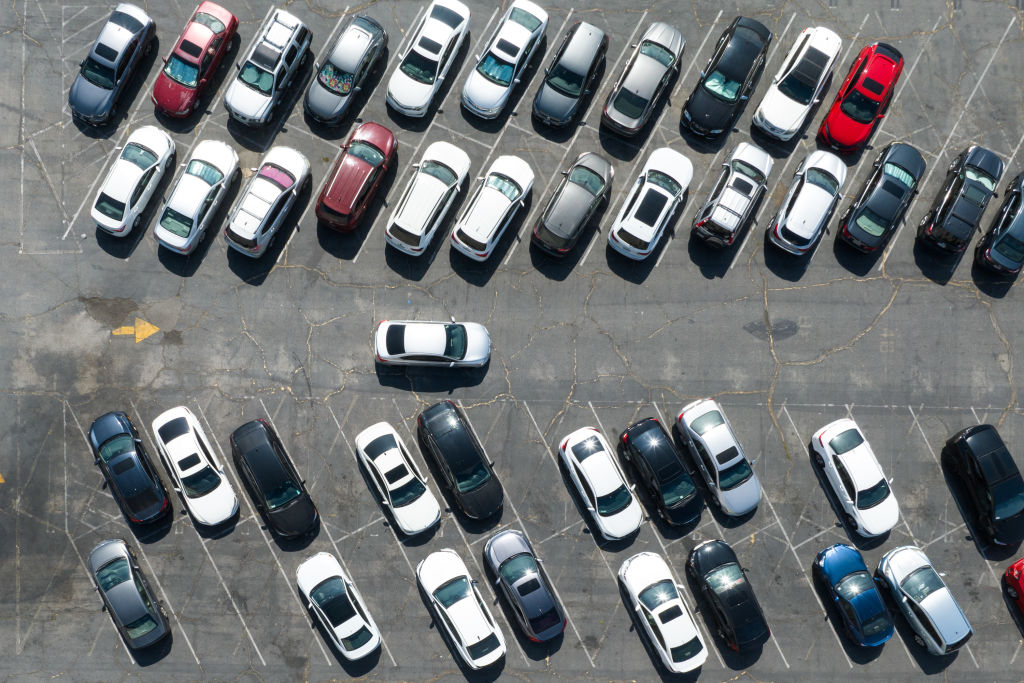
“The twin gods of Smooth Traffic and Ample Parking have turned our downtowns into places that are easy to get to, but not worth arriving at.” The quote is from urban designer Jeff Speck. It’s hard to think of a pithier one to describe the parking pandemic blighting America’s city centers — except perhaps the title of a Bloomberg article on the same topic: “Parking has eaten America’s cities”.
That article cites a 2018 study of the space and money devoted to parking in five American cities. In that year, both Seattle and Des Moines had 1.6 million parking spaces. New York City had 1.85 million, and Philadelphia 2.2 million. Tiny Jackson, Wyoming had 100,000 parking spaces, roughly one for each inhabitant.
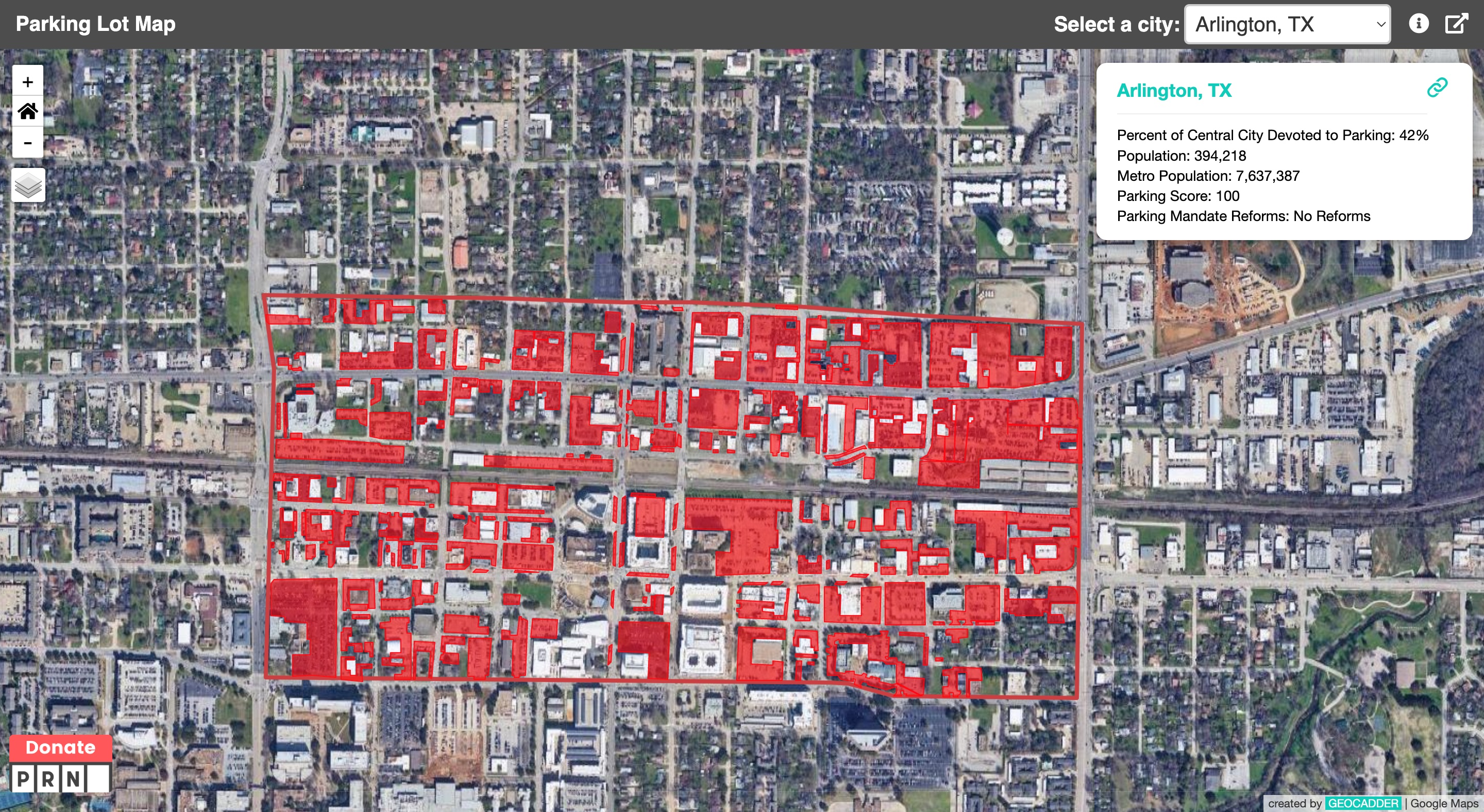
Seattle had 30 parking spaces per acre, roughly five times the number of residential units. In Des Moines, the parking-to-housing ratio per acre was around 20 to 1. Only New York had more housing units than parking spaces per acre. That worked out to 0.6 parking spaces per household (but then again, only 45% of New York households own a car).
On average, about one-fifth of all land in city centers is dedicated to parking. But what’s the actual harm being done by all that parking space? For one, city centers that are more “parkable” become less walkable. In other words, fewer things are casually accessible.
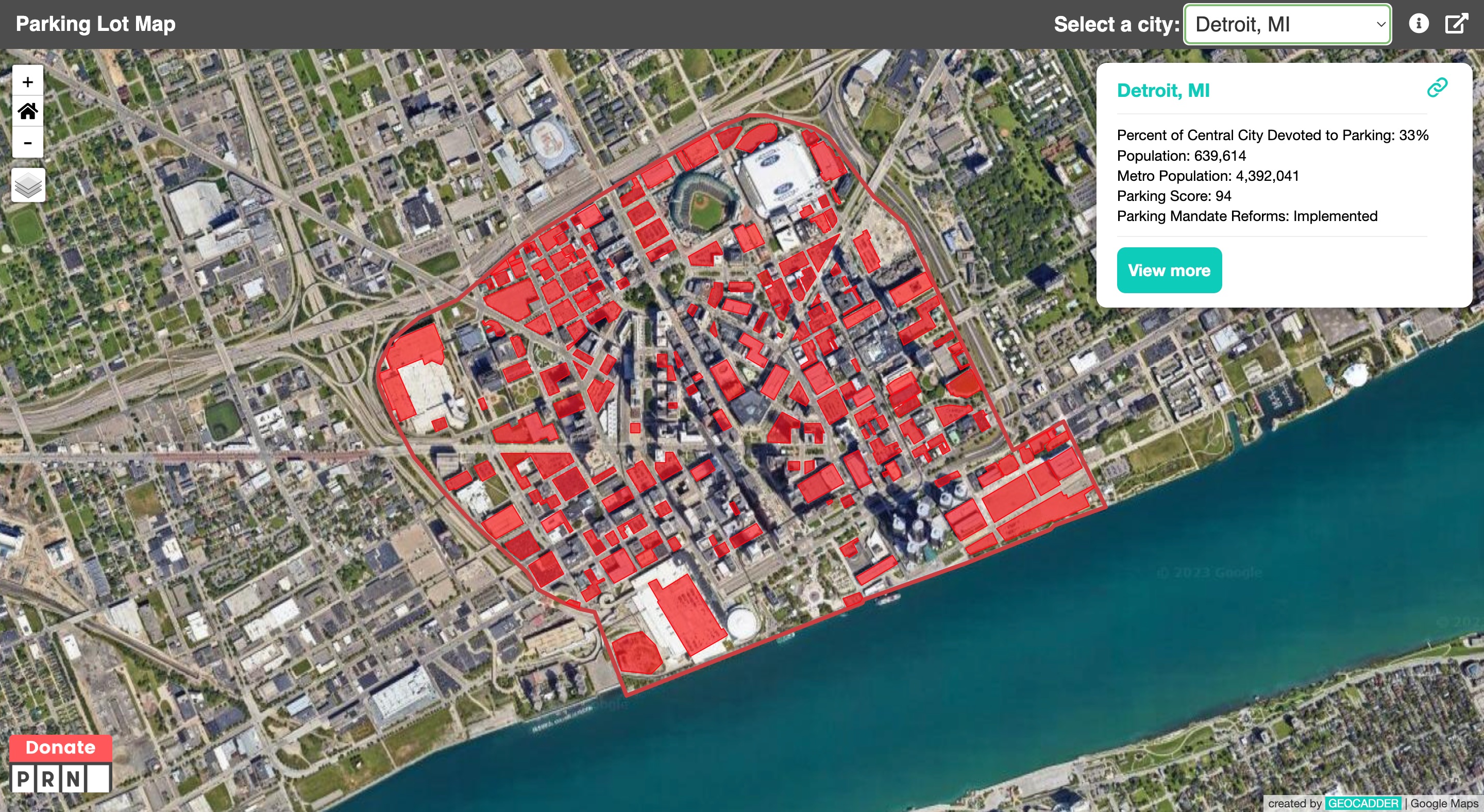
Even if you’re no fan of walking, perhaps you like a roof over your head. However, the abundance of parking spaces, often mandated for new developments by city governments, has left a lot less space for anything else, making housing in city centers scarcer and more expensive.
The Parking Reform Network (PRN), a non-profit “educat[ing] the public about the impact of parking policy” and “accelerat[ing] the adoption of critical parking reform” has found a better way to make its point than its rather bland mission statement: maps.
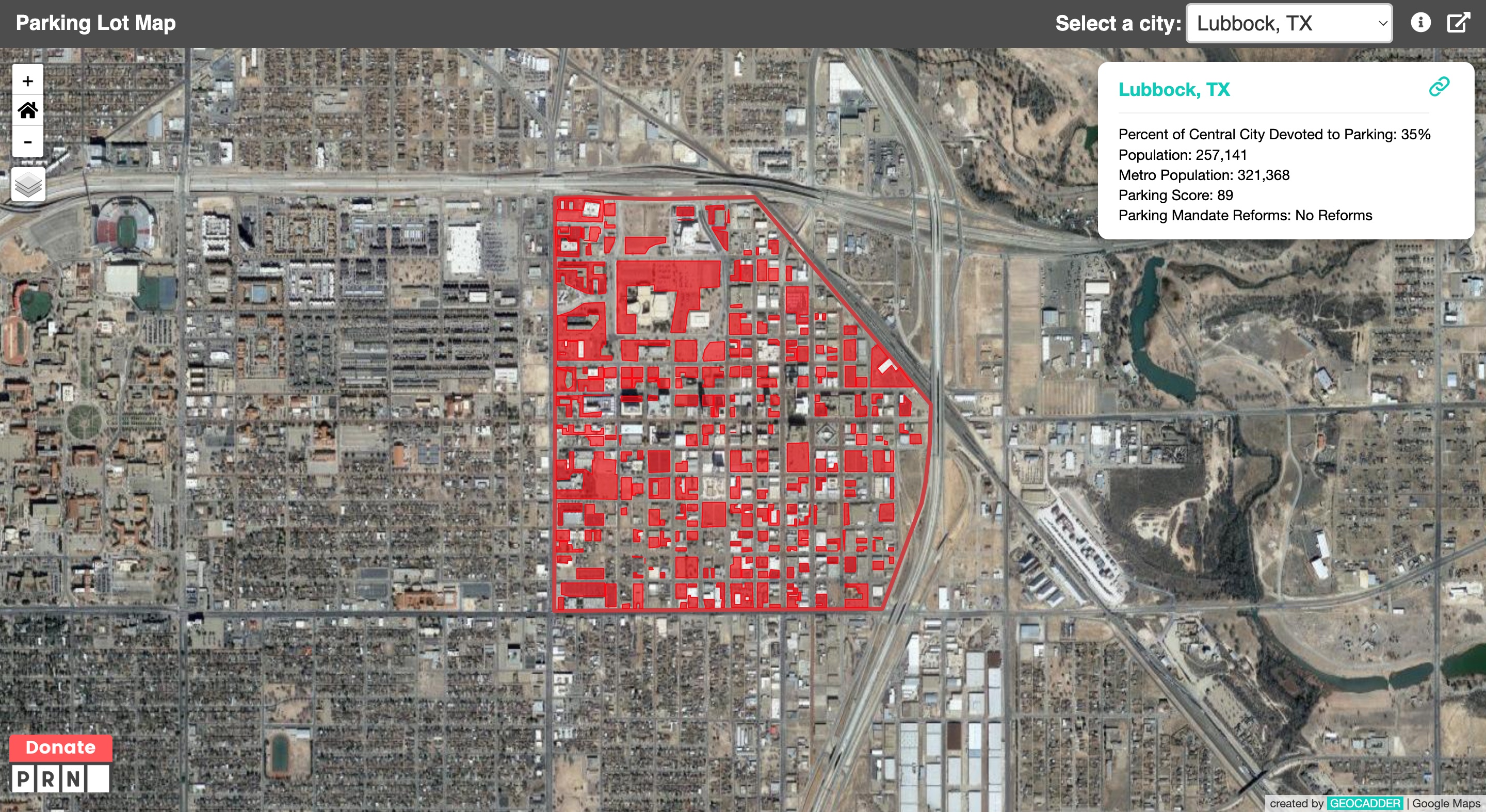
The PRN took a look at how much land is gobbled up by parking in over 50 city centers in the U.S. And the results can be pretty shocking. Let’s dive right in at the deep end.
Visit the center of Arlington, Texas, and you won’t have trouble finding a parking space. You will have trouble finding anything else, because parking space takes up no less than 42% of the city center. Detroit was, or is, Motor City. Its center can pull off another automotive-related nickname: Parking Central. Fully one-third of downtown Detroit is dedicated to letting cars do what they’re not designed for: standing still.
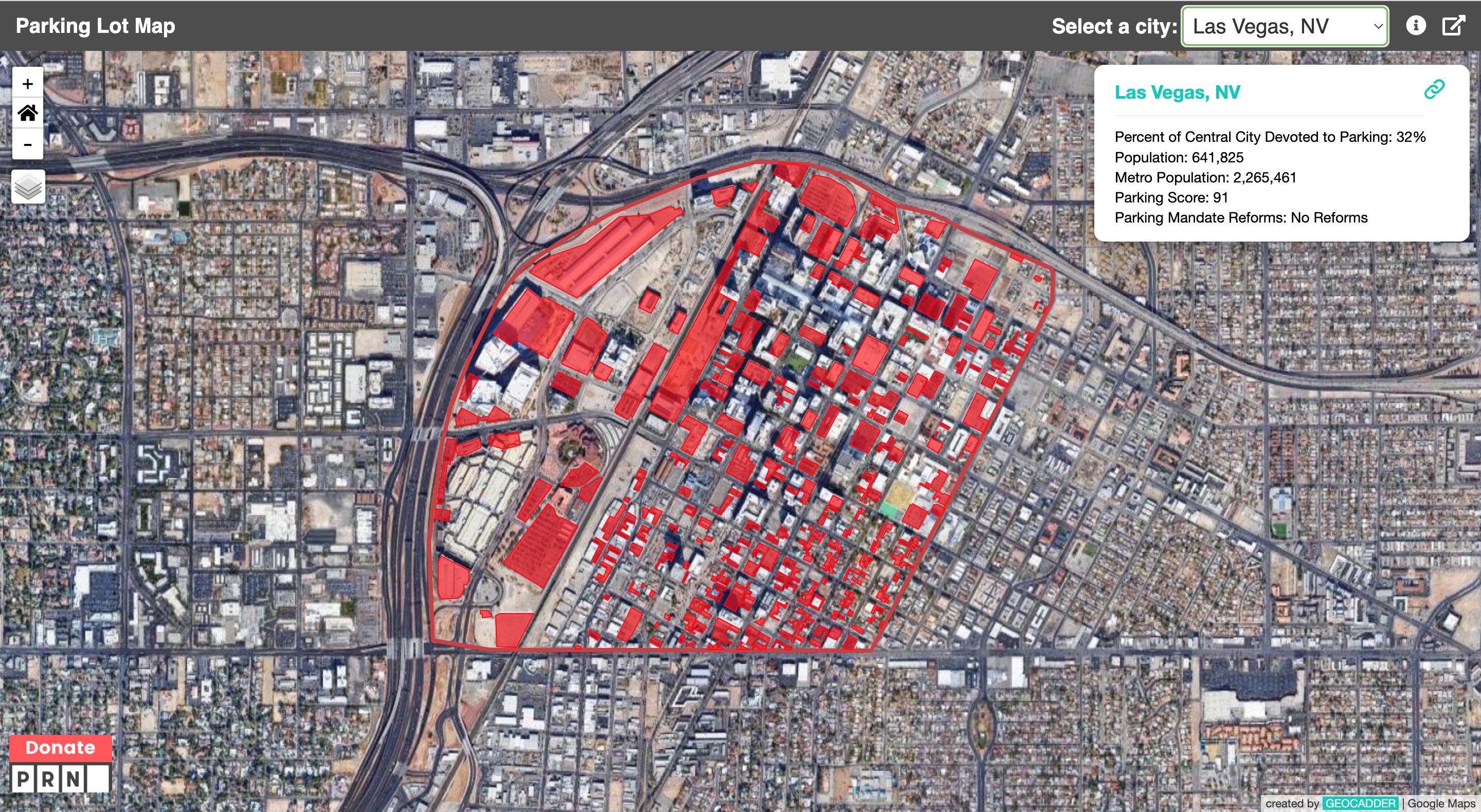
Visitors to Lubbock, Texas come for the Buddy Holly Museum, but not for its vibrant downtown — because there isn’t one. Here’s a reason: 35% of the land in central Lubbock is parking lots.
Look up “sprawl” in the dictionary, and you might find a map of Las Vegas, so it’s perhaps less useful here than anywhere else to demarcate a “center.” If you do, for the purpose of this study, you find that 32% of downtown Vegas is parking space. Think of all the casinos you could build on those lots!
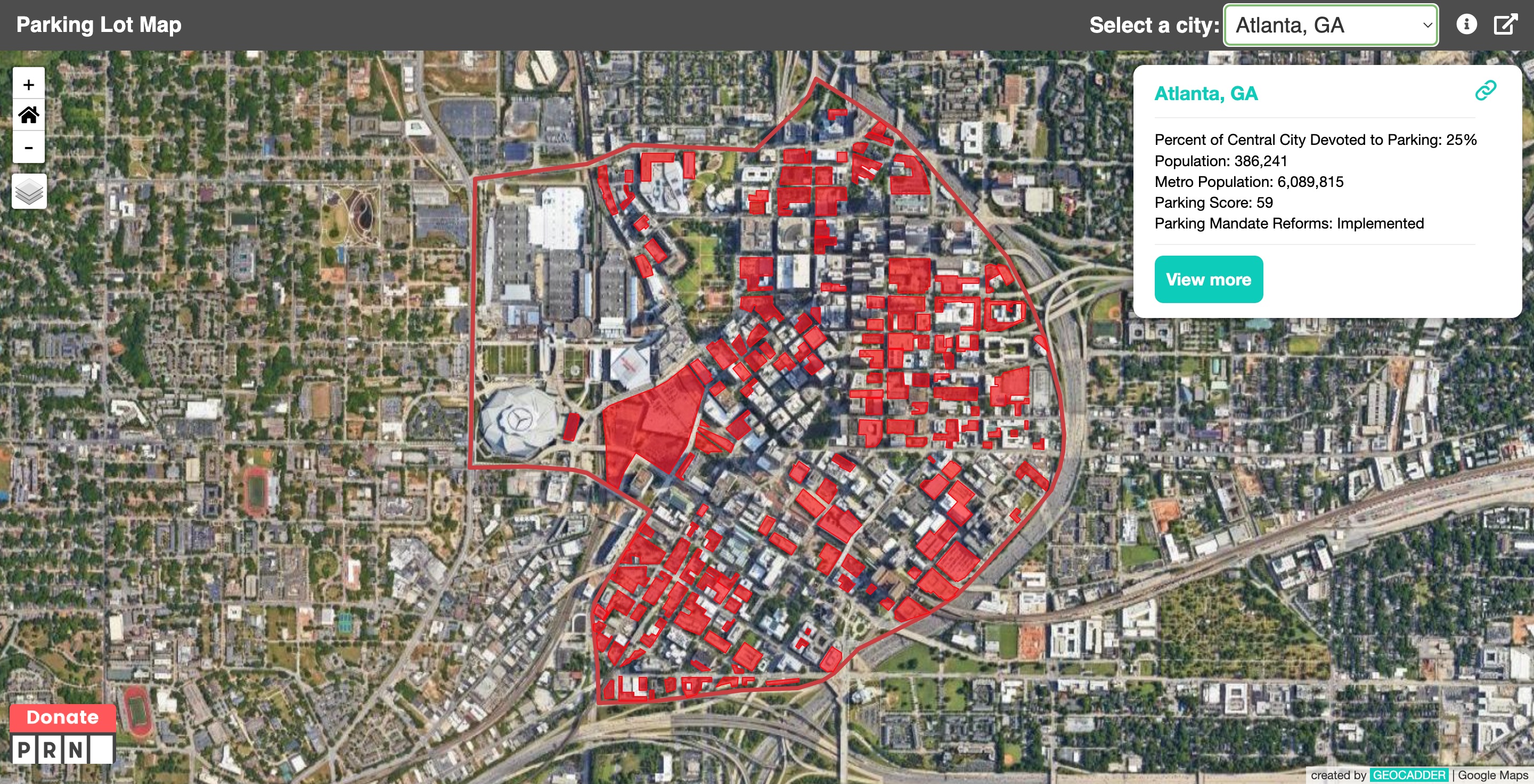
But the situation isn’t uniformly grim. Atlanta, for example, is doing somewhat better, with just 25% of downtown taken up by parking lots. Doing better still is downtown Los Angeles, admittedly somewhat counterintuitively. Only 12% of the center of the City of Angels is dedicated to parking space.
So, which cities come out on top?
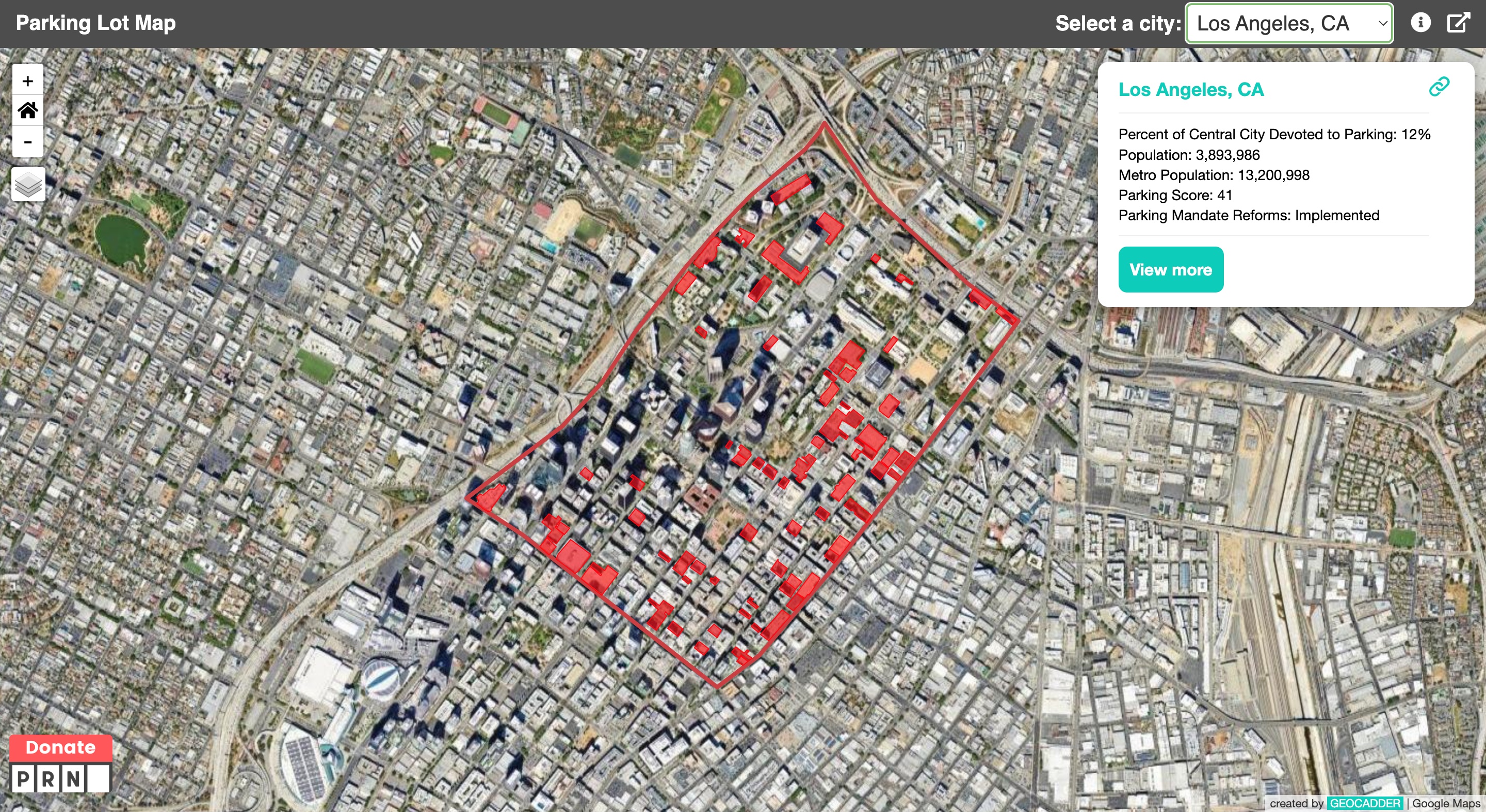
If you want to get rid of your car in downtown San Francisco, you only have a measly four percent of the available land at your disposal. Just three percent of the central area of Washington, DC is devoted to public car parking space. But New York City takes the cake. Just one percent of this chunk of midtown Manhattan is parking space. It must be that local real estate prices are too high even for America’s favorite toys.
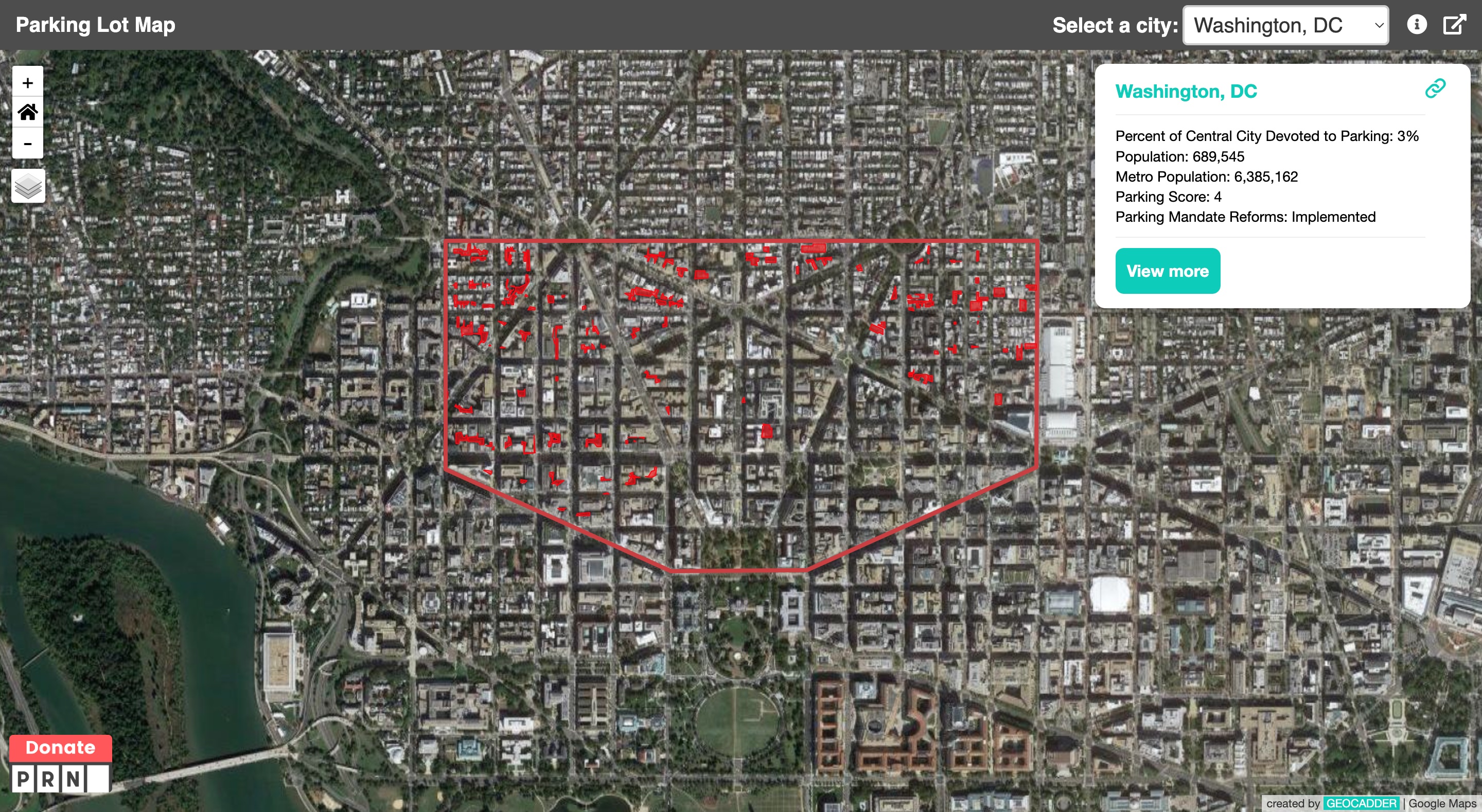
Americans’ attitude toward driving is changing. The share of high school seniors with a driving license has dropped from 85.3% in 1996 to 71.5% in 2015. The rise of shared, multimodal, and (soon, they keep promising us) autonomous mobility will further reduce the need for driver’s licenses, individual cars, and massive parking facilities in city centers.
Perhaps it’s time for American cities to become denser, more lived-in, more walkable — and less “parkable.”
For more on parking spaces, the problems they cause, and the solutions to those problems, check out the Parking Reform Network.
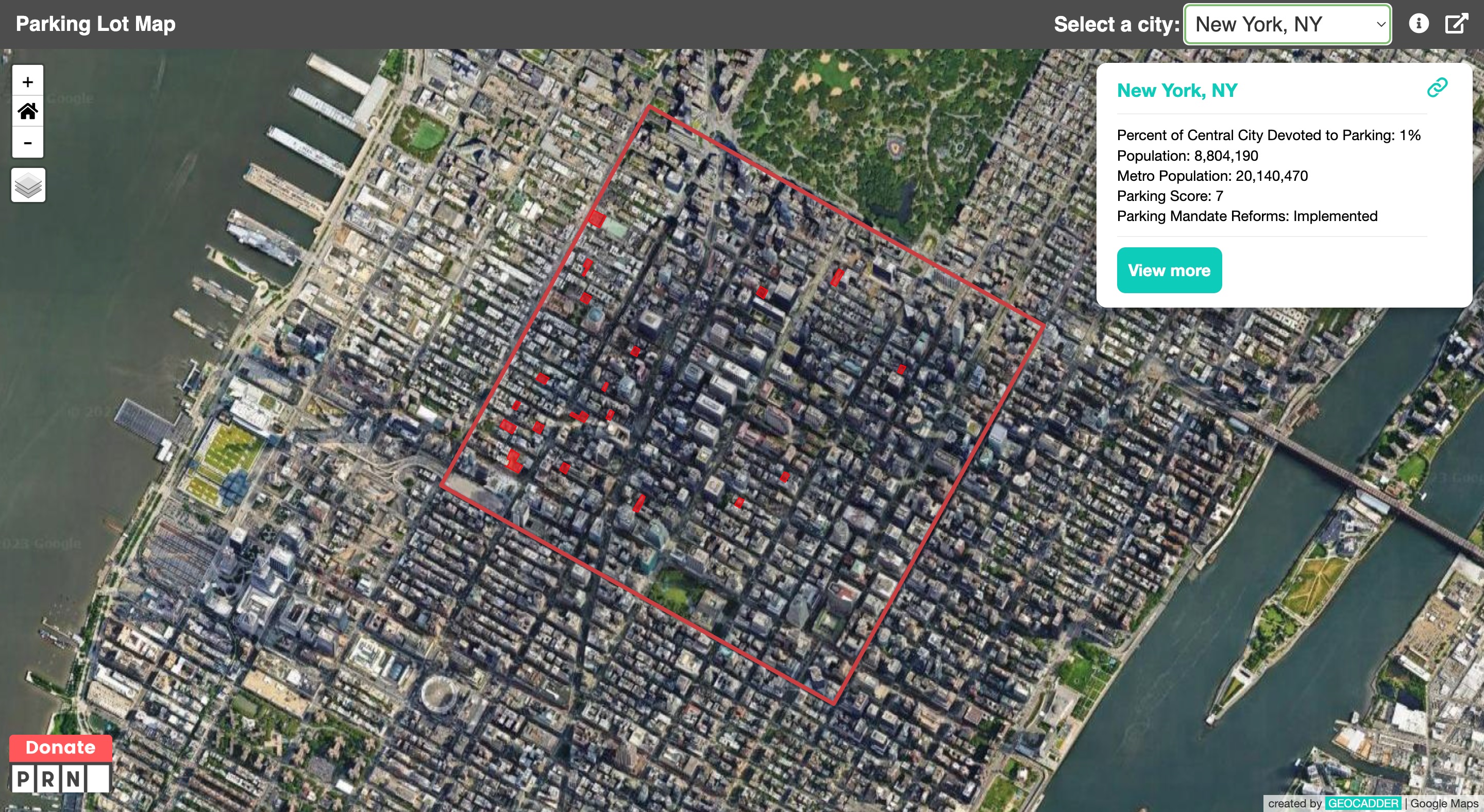
Strange Maps #1198
Got a strange map? Let me know at strangemaps@gmail.com.
Follow Strange Maps on Twitter and Facebook.
